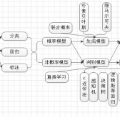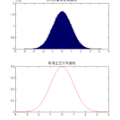Note: Accepted for publication as a chapter in "Handbook of the History and Philosophy of Mathematical Practice - Practical, Historical and Philosophical Instances of Probability" (Springer Nature, editor Egan Chernoff) The application of mathematical probability theory in statistics is quite controversial. Controversies regard both the interpretation of probability, and approaches to statistical inference. After having given an overview of the main approaches, I will propose a re-interpretation of frequentist probability. Most statisticians are aware that probability models interpreted in a frequentist manner are not really true in objective reality, but only idealisations. I argue that this is often ignored when actually applying frequentist methods and interpreting the results, and that keeping up the awareness for the essential difference between reality and models can lead to a more appropriate use and interpretation of frequentist models and methods, called "frequentism-as-model". This is elaborated showing connections to existing work, appreciating the special role of independently and identically distributed observations and subject matter knowledge, giving an account of how and under what conditions models that are not true can be useful, giving detailed interpretations of tests and confidence intervals, confronting their implicit compatibility logic with the inverse probability logic of Bayesian inference, re-interpreting the role of model assumptions, appreciating robustness, and the role of "interpretative equivalence" of models. Epistemic probability shares the issue that its models are only idealisations, and an analogous "epistemic-probability-as-model" can also be developed.
翻译:注:该论文已被接受为“数学实践的历史和哲学手册——概率的实际、历史和哲学实例”(Springer Nature,主编Egan Chernoff)的一章。数学概率论在统计学中的应用是相当有争议的。争议涉及概率的解释以及统计推断的方法。在概述主要方法之后,笔者将提出对经验主义概率的重新解释。大多数统计学家都知道,以经验主义方法解释的概率模型在客观现实中并不真实,只是理想化。我认为,当实际应用经验主义方法并解释结果时,经常忽略这一点。维持对现实和模型之间的本质区别的认识可以导致更适当地使用和解释经验主义模型和方法,称为“经验主义作为模型”。本文阐述了这一观点,并显示其与现有研究的联系,赞赏依赖独立同分布观测和主题知识的特殊作用,说明了在何种情况下并条件下不真实的模型可以是有用的,详细解释了检验和置信区间的含义,将其内在的与贝叶斯推论的逆概率逻辑的兼容性逻辑相对立,重新解释了模型假设的作用,赞赏了健壮性和模型的“解释等价性”的作用。认识到认识论概率的模型同样只是理想化的,可以发展出相似的“基于认识的概率作为模型”。





